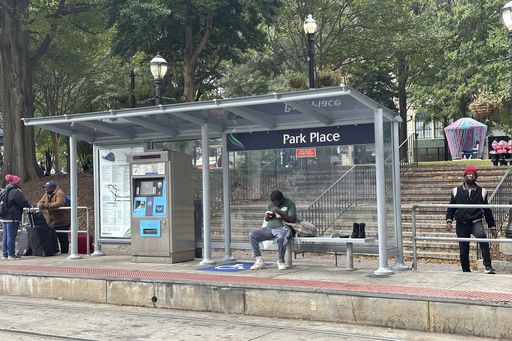
Georgia State University is set to undergo a significant transformation of its downtown Atlanta campus, with plans for a $107 million renovation by summer 2026. This ambitious project is largely supported by an $80 million donation from the Robert W. Woodruff Foundation, a notable philanthropic entity in Georgia’s history, established by a former CEO of Coca-Cola. The university itself will contribute $27 million towards the renovation efforts, which are designed to be completed before the World Cup soccer matches kick off at the nearby Mercedes-Benz Stadium in June 2026.
The university’s redevelopment includes plans to tear down one of its original structures to create a new quadrangle, close off a section of a downtown street, renovate several buildings, and enhance downtown’s Woodruff Park. Officials believe that revamping these spaces will boost student engagement and make downtown Atlanta a more inviting environment. Currently, the area faces high vacancy rates in office spaces, as many businesses have shifted their focus to the more vibrant Midtown district, a movement that has been intensified by challenges brought on by the pandemic.
Mayor Andre Dickens of Atlanta expressed enthusiasm for the project, highlighting its potential to revitalize both the downtown area and the city as a whole. He mentioned his personal connection to Georgia State through his master’s degree, reinforcing the importance of this initiative.
The University System of Georgia regents approved the renovation plan, although final decisions on specific projects will still need their approval down the line. Georgia State’s history as an institution started as a night school before World War II, and it has traditionally lacked the typical outdoor spaces seen on many other American college campuses. Over the years, the university has taken ownership of various buildings, but some of these structures lack an inviting appearance.
President M. Brian Blake is determined to change this perception, envisioning a campus environment that resembles a “college town” nestled in the heart of the city. When he assumed his role in 2021, Blake was made aware of student desires for a more conventional campus layout, which has been part of the university’s long-term vision. The Woodruff Foundation’s encouragement for bold ideas has propelled the university to reconsider its approach.
The university had previously transformed a section of land by removing a 1925 parking garage to create a greenway, which is now a lively corridor for students. Plans include demolishing Sparks Hall, a 1955 structure named after Georgia State’s inaugural president, to establish a larger quadrangle. Additionally, the university aims to secure permission from the city to close a block of Gilmer Street, making way for a pedestrian-friendly pathway leading to Hurt Park, which the university oversees on behalf of the city.
Renovations will also extend to buildings that face Hurt Park, including the former headquarters of the United Way of Greater Atlanta, recently acquired by Georgia State for $34 million.
Enhancements to Woodruff Park will be another key aspect of this initiative. Currently, the park is home to a significant homeless population. The university plans to collaborate with the Metropolitan Atlanta Rapid Transit Authority to relocate a streetcar platform, facilitating the construction of a larger set of stairs from one of the campus buildings into the park. This change is expected to encourage more students to cross the park and access further east buildings of Georgia State.
As part of the vision for a more welcoming park, Blake emphasized the importance of providing additional support and services for homeless individuals. Georgia State established a Center on Health and Homelessness within its School of Public Health to explore solutions to the issue and aims to integrate academic resources to tackle these challenges directly.
Improving the downtown landscape not only aims to enhance the perception of safety among current and prospective students, but it also serves as a means for Georgia State to attract more enrollments. Many admitting students cite safety concerns as a reason for declining offers of admission. With this renovation project, university officials hope to foster a vibrant and energetic environment that resonates with students.
